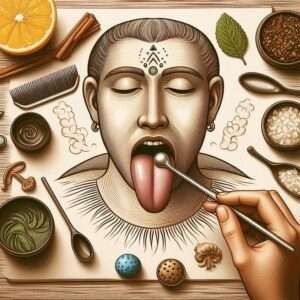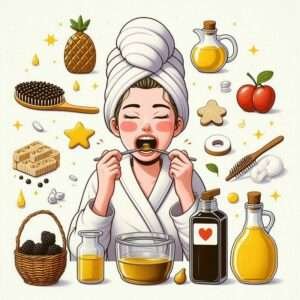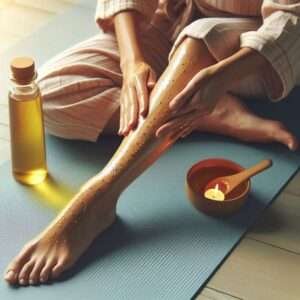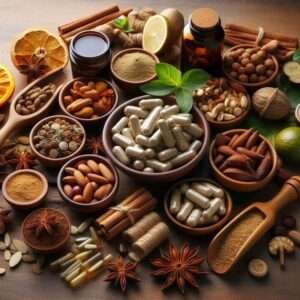Revitalize Your Routine: 7 Ayurvedic Practices to Transform Your Life
Ayurveda, the ancient science of life, offers a treasure trove of wisdom for living a balanced and healthy life. Integrating Ayurvedic practices into your daily routine can help you achieve physical, mental, and spiritual harmony. Let’s dive into seven transformative Ayurvedic practices that can revitalize your routine and enhance your overall well-being.
Understanding Ayurveda
Origins and History
Ayurveda, which translates to “the science of life,” is a holistic healing system that originated in India over 5,000 years ago. Rooted in ancient Vedic traditions, it encompasses various aspects of health, from diet and lifestyle to herbal remedies and spiritual practices.
Basic Principles
The Three Doshas
At the core of Ayurveda are the three doshas: Vata, Pitta, and Kapha. These doshas are biological energies found throughout the human body and mind. Each person has a unique combination of these doshas, which defines their constitution and influences their health and behavior.
Balance and Imbalance
In Ayurveda, health is defined as the balanced state of the doshas, while disease results from their imbalance. The goal of Ayurvedic practices is to maintain or restore this balance through diet, lifestyle changes, and herbal remedies.
Ayurvedic Daily Routine (Dinacharya)
The Concept of Dinacharya
Dinacharya refers to the daily routine recommended by Ayurveda. It involves various activities aimed at maintaining health and preventing disease by aligning the body with the natural cycles of the day.
Benefits of Following a Daily Routine
Adopting a consistent daily routine helps regulate bodily functions, boosts energy levels, enhances mental clarity, and promotes overall well-being.
7 Ayurvedic Practices to Transform Your Life
Practice 1: Tongue Scraping

How to Perform Tongue Scraping
Tongue scraping is a simple practice performed in the morning before brushing your teeth. Using a tongue scraper, gently scrape the surface of your tongue from back to front several times.
Benefits of Tongue Scraping
This practice helps remove toxins, bacteria, and dead cells from the tongue, improving oral hygiene, enhancing taste, and promoting digestive health.
Practice 2: Oil Pulling
How to Perform Oil Pulling

Oil pulling involves swishing a tablespoon of oil (typically sesame or coconut oil) in your mouth for 10-20 minutes. Spit out the oil and rinse your mouth with warm water.
Benefits of Oil Pulling
Oil pulling helps detoxify the mouth, reduce plaque buildup, prevent cavities, and improve overall oral health. It also promotes clearer skin and enhances immune function.
Practice 3: Abhyanga (Self-Massage)

How to Perform Abhyanga
Abhyanga is a warm oil massage performed daily before bathing. Apply warm oil to your body, massaging it in circular motions, and let it sit for 15-20 minutes before rinsing off.
Benefits of Abhyanga
This practice nourishes the skin, improves circulation, relaxes the muscles, calms the nervous system, and promotes better sleep.
Practice 4: Nasya (Nasal Cleansing)

How to Perform Nasya
Nasya involves applying herbal oils or ghee into the nostrils. Tilt your head back, put a few drops of oil in each nostril, and inhale deeply.
Benefits of Nasya
Nasya helps clear nasal passages, improve breathing, relieve sinus congestion, enhance mental clarity, and balance the doshas.
Practice 5: Meditation and Pranayama
Techniques for Meditation

Meditation involves sitting quietly and focusing on your breath, a mantra, or an object. Aim to meditate for at least 10-20 minutes daily.
Techniques for Pranayama
Pranayama consists of breathing exercises that regulate the flow of prana (life force) in the body. Common techniques include Nadi Shodhana (alternate nostril breathing) and Kapalabhati (skull shining breath).
Benefits of Meditation and Pranayama
These practices reduce stress, enhance mental clarity, improve respiratory function, increase energy levels, and promote emotional balance.
Practice 6: Herbal Supplements

Common Ayurvedic Herbs
Popular Ayurvedic herbs include Ashwagandha, Turmeric, Triphala, and Tulsi. These herbs can be taken in various forms, such as powders, capsules, or teas.
Benefits of Herbal Supplements
Herbal supplements support various bodily functions, enhance immunity, reduce inflammation, promote mental clarity, and balance the doshas.
Practice 7: Eating According to Your Dosha

Identifying Your Dosha
Understanding your unique dosha composition helps tailor your diet to maintain balance. Consult an Ayurvedic practitioner or take an online quiz to identify your dosha.
Dietary Recommendations
Each dosha has specific dietary needs. For example, Vata types benefit from warm, grounding foods, while Pitta types should favor cooling, hydrating foods. Kapha types thrive on light, energizing meals.
Integrating Ayurvedic Practices into Modern Life
Starting Small and Building Up
Incorporating Ayurvedic practices into your routine doesn’t have to be overwhelming. Start with one or two practices and gradually add more as you become comfortable.
Finding Balance and Consistency
Consistency is key to reaping the benefits of Ayurvedic practices. Strive for balance, and remember that small, sustainable changes can lead to significant improvements over time.
Embark on a journey of rejuvenation with these 7 Ayurvedic practices that will transform your life. From holistic wellness to inner balance, discover ancient secrets to revitalize your routine. Plus, uncover more Ayurvedic wisdom in ‘Uncover the Secrets: Ayurvedic Habits to Boost Your Immune System Naturally
Conclusion
Ayurveda offers a holistic approach to health that can profoundly impact your life. By integrating these seven Ayurvedic practices into your daily routine, you can achieve greater balance, vitality, and overall well-being. Remember, the journey to health is a personal one, and every small step counts.

